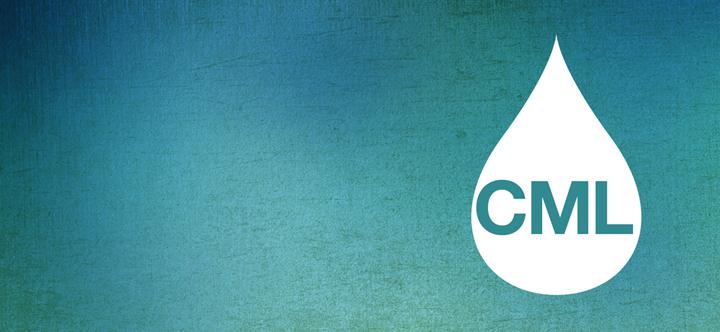Chronic myeloid leukemia (CML), also known as chronic granulocytic leukemia, is a condition where the bone marrow makes too many white blood cells. This article focuses on the treatment of chronic myeloid leukemia using standard care procedure. Making a chronic myeloid leukemia treatment plan, patients are encouraged to consider clinical trials as an option. Clinical trials involve the use of new approaches in treatment which see whether they are safe, effective, and possibly better than standard treatment. In clinical trials, new drugs or a combination of treatments can be used. Your doctor will help you review treatment options and advise whether to use clinical trials or not.
What is Chronic Myeloid Leukemia?
Usually, the bone marrow produces blood stem cells that become mature over time as either a myeloid stem cell or lymphoid stem cell. A lymphoid stem cell becomes a white blood cells while myeloid become red blood cells, platelets, or granulocytes. Chronic Myeloid Leukemia is a condition in which too many blood stem cells become granulocytes and turn into white blood cells. It is a slowly progressive disease that normally occurs during or after middle age, rarely occurring among children. The condition can affect the red blood cells, white blood cells, and platelets. Common symptoms of chronic myeloid leukemia include night sweats, fever, and tiredness. Most people with CML experience a gene mutation called Philadelphia chromosome. Standard tests used to examine blood and bone marrow can diagnose chronic myelogenous leukemia.
Chronic Myeloid Leukemia Treatment Overview
While performing treatment for CML leukemia, doctors may work to come up with patient’s treatment plan. These may combine various types of treatments. Cchronic myeloid leukemia medication options are available. Treatment options have significantly improved over the last few years, completely changing how medications are administered to help prolong life. Treatment recommendations depend on multiple factors like the phase of the disease, the patient’s preference, possible side effects, and overall health. Treatment for CML leukemia also include treatment for symptoms and side effects, an important part of cancer care.
Targeted Therapy
Targeted therapy pinpoints the cancer’s specific genes, proteins, and tissue environments that contribute to cancer growth survival. These treatments help to block growth and spread of the disease to cells, limiting damage to healthy cells. For CML, the target is a protein called BCR-ABL tyrosine-kinase enzyme. Five common drugs used to target this protein include:
- Imatinib (Gleevec): the first target therapy approved for treatment of CML in U.S. It is a pill taken twice a day. It has been proven to work better than chemotherapy in CML treatment and has limited side effects. Almost all patients have their blood count returned to normal and their spleen shrink.
- Dasatinib (Sprycel): An FDA-approved drug used as initial treatment for a patient newly diagnosed. Sprycel has a number of side effects, including anemia, thrombocytopenia, neutropenia, and pulmonary hypertension.
- Nilotinib (Tasigna): Used at the initial phase of the disease or when other drugs have failed, its side effects include low blood counts, nausea, rash, headache, diarrhea, and itching. Other more rare side effects include high blood sugar level, pancreas/liver swelling, and fluid build-up.
- Bosutinib (Bosulif): An FDA-approved drug used when other targeted therapies failed or resulted in too many side effects. The most common side effects include diarrhea, low levels of blood cells, nausea, vomiting, fatigue, abdominal pain, allergic reactions, fever, and liver problems.
- Ponatinib (Iclusig): Another FDA-approved drug used when the administration of TKIs is not effective or the patient experiences many side effects. Ponatinib targets CML cells that have a particular mutation known as T3151, which make the cells resistant to other TKIs. The most common side effects include abdominal pain, rash, high blood pressure, dry skin, headache, fatigue, joint pain, fever, and abdominal pain.
Chemotherapy
Chemotherapy is a chronic myeloid leukemia treatment that helps to destroy cancer cells by stopping their ability to grow or divide. The two common chemotherapy drugs for CML are hydroxyurea and omacetaxine mepesuccinate. An FDA-approved chemotherapy which helps return white blood cells to normal levels within weeks of diagnosis is hydroxyurea. Another FDA-approved method for patients with chronic or accelerated CML which failed to respond to the TKIs is omacetaxine mepesuccinate.
Stem Cell/Bone Marrow Transplantation
Stem cell transplantation is another potential chronic myeloid leukemia treatment. Hematopoietic stem cells replace the affected bone marrow. This then grows into new, healthy bone marrow. It is a risky procedure that depends on a number of factors, such as the phase of CML, age, general health, and previous treatments. Autologous (AUTO) and allogeneic (ALLO) are two types of stem cell transplantations available. They depend on the source of replacement blood stem cells. The main aim of both is to destroy all cancer cells in the blood, marrow, and any other part of the body.
Immunotherapy
Immunotherapy, also known as biological therapy, helps boost the body’s immune system. Manufactured treatment materials aim to restore immune system functions. Interferon is an example of such immunotherapy that helps reduce red blood cells and sometimes decrease cells that have the Philadelphia chromosome.
Regardless, any chronic myeloid leukemia treatment can result in a number of side effects. Proper care to relieve symptoms and side effects should be a part of chronic myeloid leukemia medication. Before treatment begins, consult with your doctor about possible treatment side effects and palliative care available. Be sure to inform your doctor immediately if you experience any problems during treatment.
Featured Image Source: lls.org








